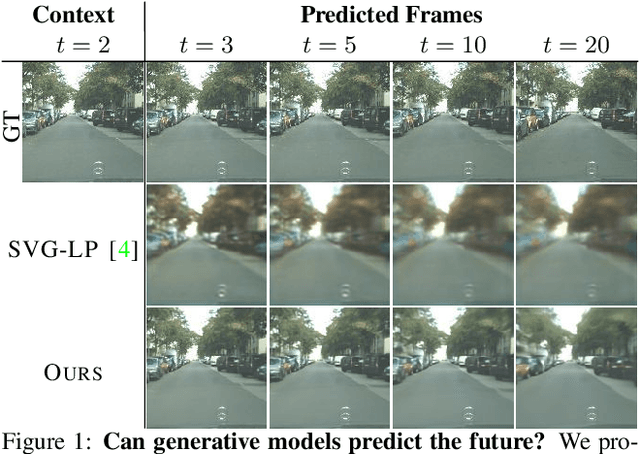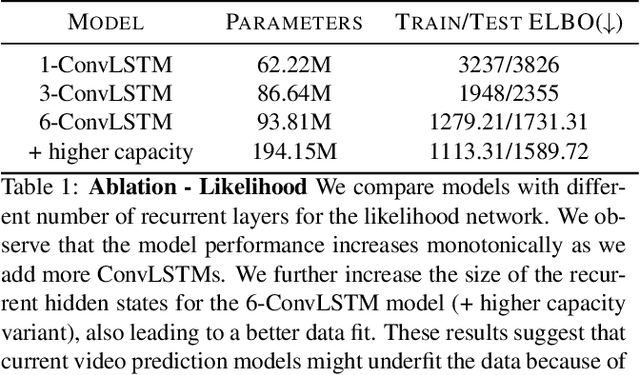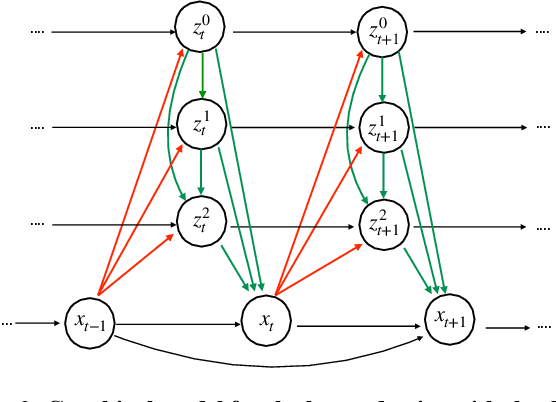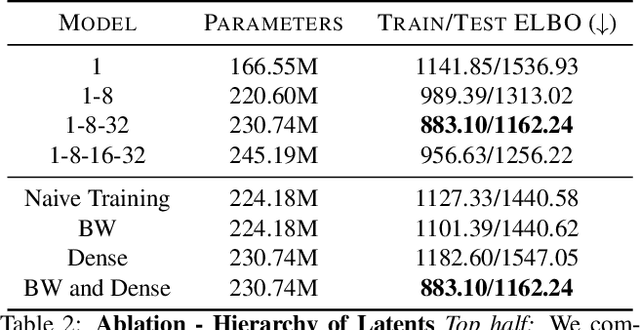Improved Conditional VRNNs for Video Prediction
Paper and Code
Apr 27, 2019



Predicting future frames for a video sequence is a challenging generative modeling task. Promising approaches include probabilistic latent variable models such as the Variational Auto-Encoder. While VAEs can handle uncertainty and model multiple possible future outcomes, they have a tendency to produce blurry predictions. In this work we argue that this is a sign of underfitting. To address this issue, we propose to increase the expressiveness of the latent distributions and to use higher capacity likelihood models. Our approach relies on a hierarchy of latent variables, which defines a family of flexible prior and posterior distributions in order to better model the probability of future sequences. We validate our proposal through a series of ablation experiments and compare our approach to current state-of-the-art latent variable models. Our method performs favorably under several metrics in three different datasets.
 Add to Chrome
Add to Chrome Add to Firefox
Add to Firefox Add to Edge
Add to Edge